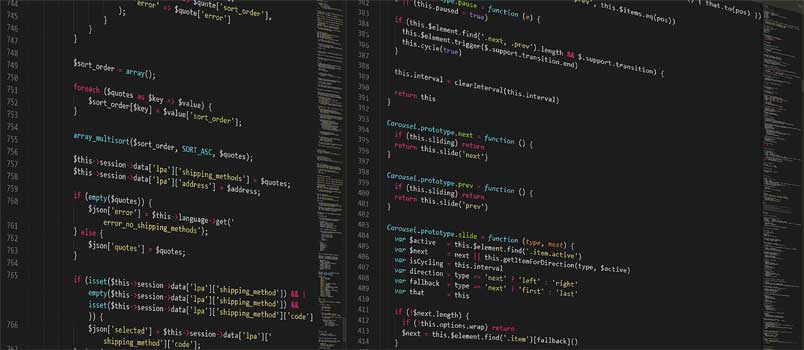Front-end web development refers to building websites and apps using various programming languages like Javascript, CSS, and HTML5. Javascript is responsible for the dynamic content and interactivity you see on modern websites. This includes the overall user interface, games, moving banners and buttons users can click on and interact with.
Various Javascript development services specialize in this robust language. However, companies are also looking for alternatives in ever more diverse ways to stand out from the competition. Javascript is great for dynamic web content, but it is not the only player out there.
Keep in mind that not all the languages below are meant to replace Javascript in its entirety, but some are meant to complement it. With that said, here are some alternatives to Javascript in front-end development:
1. Kaffeine
Kaffeine compiles Javascript code and makes debugging easier. This language is basically an extension of Javascript syntax and adds to Javascript code.
Thus, the language is really Javascript with a can of paint thrown on top to make it stand out and easier to work with for some tasks. It is particularly useful for front-end devs stuck within Javascript’s callback functions as the language can designate asynchronous operations.
Asynchronous operations refer to Javascript requests with AJAX in a loop. The system does not wait for each request to occur independently as they occur simultaneously. The browser does not freeze and impact the user experience as requests are called and they occur without waiting for the responses of previous requests.
2. Dart
Dart is a new-gen, high-performance language that is Google’s answer to Javascript programming. It is a language aimed at replacing Javascript in its entirety. It can also either compile Javascript code or natively within its own virtual machines (VMs).
Despite not yet gaining much adoption when compared to Javascript, the language offers some benefits and unique features that Javascript lacks. These features include optional typing, classes and external libraries.
Dart’s syntax or code is not too dissimilar from Javascript, thus the language is not difficult to come into for front-end devs already familiar with Javascript syntax. Keep an eye out for this language as Google keeps updating it and adding features.
3. TypeScript
Typescript is an open-source language developed by Microsoft and is designed to complement Javascript by adding static typing to it. Some of its features include a unique take on classes, modules, interfaces as well as an arrow syntax for anonymous functions.
The language also has an optional static typing system that really makes it stand out from Javascript or take it to the next level. Static typing allows developers working with Typescript to use language-analysis tools on it.
TypeScript is also backward compatible with Javascript and Node.js. Microsoft opened the language up for the masses as it is open source and part of the Apache 2.0 license.
4. Opal
Opal, or optimized applicative language, is an object-oriented and functional language that acts as a source-to-source compiler (transcompiler) from the Ruby programming language to Javascript. it can be used to complement or replace Javascript entirely for similar tasks.
The language unifies modules, functions/methods, classes and properties into the two concepts of object and pattern. It also shares features with Java, C, and C++ and can replace many of these languages for certain tasks on its own.
5. Elm
Elm is a functional and domain-specific language that specializes in creating a unique graphic user interface (GUI) for web apps. It is a relatively new language and is often used by developers in conjunction with Javascript as a way to complement it.
Elm features self-formatting code can be easily compiled to Javascript and offers flexibility second to none. It is not difficult to learn for anyone familiar with Javascript or front-end development. Elm’s three key points include robustness, usability, and performance.
Conclusion
It is no secret that Javascript is one of the main go-to languages when it comes to server-side work or front-end development. It is one of the three pillars in this regard alongside HTML and CSS. Thus, any programmer that specializes in front-end development should be familiar with it.
However, other languages exist that can get much of the same tasks done as Javascript and other tasks even easier. Kaffeine and Elm are good examples of such languages in the complementary sense. Google’s Dart is a language that is more of a replacement
These five languages offer front-end developers more options and the ability to stand out from colleagues that use only Javascript alongside HTML and CSS for all tasks. By using some of these languages, in addition to knowing Javascript, developers can find more creative ways to add interactive elements to web content.
The web is also very dynamic and what’s popular today may not be tomorrow. Sites change and the type of interaction users expect or rely on also suffer changes over time. This is why it is a great time to be a front-end developer, especially a creative one with various skills under one’s belt.





